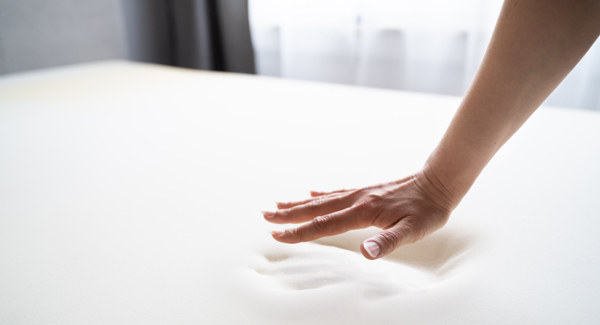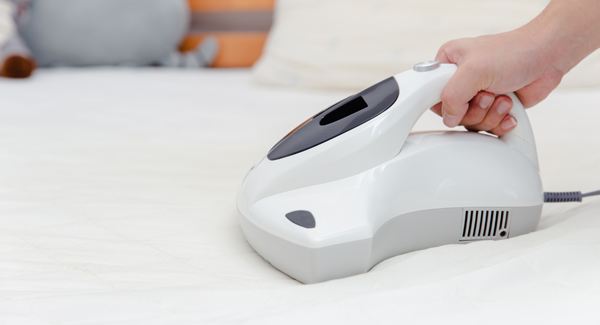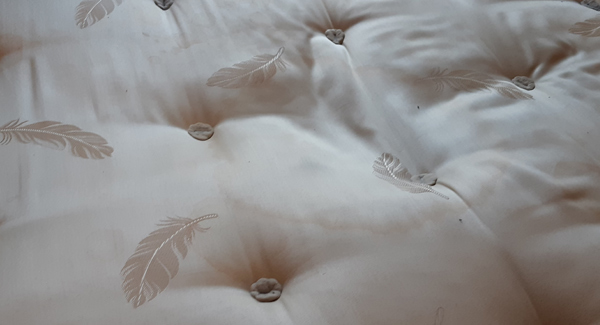Home » Mattress care » Can You Turn A Memory Foam Mattress?
Can you turn a memory foam mattress?
Article navigation
- Published:
- Written by: Tony Brown
- Topic: Mattress care
While memory foam is a durable material, it can develop body impressions, particularly in the areas where most of the body’s weight is concentrated. Although many memory foam mattresses are labelled as ‘non-turn’ or ‘no need to turn’, occasionally turning your mattress will allow the material to settle more evenly.
Can you flip a memory foam mattress?
Unlike traditional mattresses, which have fillings on both sides and benefit from being turned regularly, memory foam mattresses are single-sided and cannot be flipped.
Memory foam mattresses are constructed with different layers of foam, which vary in thickness and density. Each model has a unique layer combination, usually including a durable base layer for stability combined with comfort and support layers.
This layer construction means you can only sleep on the top side of the mattress, as the underside is not suitable for sleeping.
Should you rotate a memory foam mattress?
Memory foam mattresses can be quite heavy and flexible, making turning a daunting task. Fortunately, memory foam mattresses only require rotating, without having to lift the mattress from its base.
There are several reasons to rotate your mattress:
Even wear – Rotating your mattress helps to even out the wear across the sleeping surface, preventing specific areas from wearing out sooner than others.
Preventing sagging – Mattresses can develop body impressions and indentations where most pressure is applied from sleeping. Rotating your mattress helps to minimise these impressions, allowing the fillings to settle more evenly.
Preserve comfort and support – Maintaining an even sleeping surface helps to ensure your mattress continues to perform as expected.
Extend lifespan – Rotating your mattress can help extend its life by promoting even wear and preventing premature sagging or deterioration of the foam layers.
How often should you rotate a memory foam mattress?
You should typically rotate your memory foam mattress at least once a month. However, the frequency may vary depending on the type of mattress, its usage and the extent of settlement.
For instance, some all-foam mattresses do not require turning since they maintain their shape and support. Similarly, a mattress used infrequently, like a guest bed, may only need to be rotated occasionally. On the other hand, if more pressure is applied to the material, such as from a heavier person, more frequent rotation may be necessary.
Always refer to the manufacturer’s care instructions, which outline how and when to rotate your mattress.
How to rotate a memory foam mattress
To keep physical effort to a minimum and to ensure you rotate your mattress safely and effectively, follow these steps:
Clear the space
Before you begin, ensure there’s plenty of space to work with. Move any fragile items, such as lamps, pictures, and bedroom accessories, out of the way. Reposition bedside tables and other furniture items so they don’t obstruct the turning. Also, consider stripping your bedding to prevent your sheets or duvet from getting tangled or catching on the bed.
Seek assistance
While rotating a mattress is relatively straightforward, it is much easier with two people, so try to get help where possible. Some memory foam mattresses have handles. These handles are not designed for lifting, but you can use them to help rotate and position the mattress on the bed base.
Rotate the mattress
Slide the mattress away from the headboard, if you use one, and towards the foot of the bed. Avoid bending or folding hybrid mattresses, as they often contain springs that can be damaged. Slowly rotate the mattress 180 degrees while maintaining good posture to prevent injury, and then reposition the mattress back on its base.
Does memory foam sag?
Over time, all mattresses can develop sagging and become uncomfortable. Sagging is usually a sign of wear and tear, with dips and indentations becoming more noticeable on the sleeping surface as the fillings deteriorate. Rotating the mattress may help distribute the wear more evenly. However, once a memory foam mattress sags significantly, little can be done to restore it, and replacing it is often the best solution.
How to extend the life of a memory foam mattress?
Besides turning, there are several ways to preserve the condition of your mattress and extend its life.
Keep the material dry
Avoid getting your memory foam mattress wet, as this can damage the material and allow mould and mildew to develop. Refrain from sleeping on the mattress with wet hair or using a hot water bottle in case it leaks. If liquids spill directly on the mattress, use clean paper towels to soak up as much liquid as soon as possible.
Use a mattress protector
Always use a mattress protector to prevent liquids from penetrating the material. Use a thin, waterproof protector that safeguards the mattress without affecting how it feels and performs.
Discourage children from jumping on the mattress
Discourage children from jumping on the mattress. Not only could they injure themselves, they could damage the material and invalidate its warranty.
Clean removable covers
Some memory foam mattresses come with covers, which you can remove for cleaning or airing. Regularly washing the cover helps maintain a clean and hygienic sleep environment. Always follow the manufacturer’s instructions carefully when cleaning the cover.
Use a compatible bed base
Always place your mattress on a suitable bed base to ensure you get the best sleep possible. Memory foam mattresses typically perform well on slats or solid bed bases. Ensure the bed base is well-ventilated, allowing good air circulation to prevent moisture build-up.
Final thoughts
Rotating your memory foam mattress is a simple yet effective way to maintain its condition, preserve its comfort, and ensure it lasts for years to come.
Share this article

About the author
Tony Brown is the founder and creator of The Bed Consultant. His career in the bed industry began in 2002. After graduating from university with a degree in Business Administration, Tony joined one of the largest independent furniture retailers in the UK as a bed consultant. Tony has helped thousands of customers find the perfect mattress.





